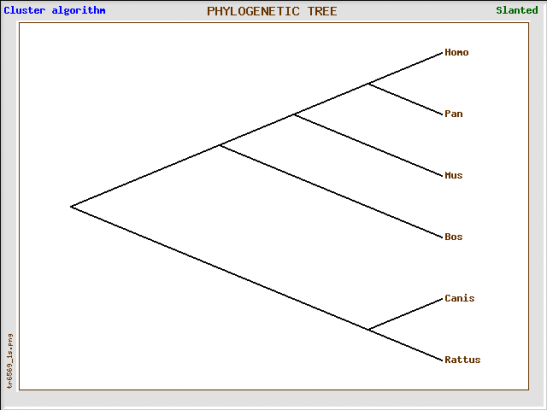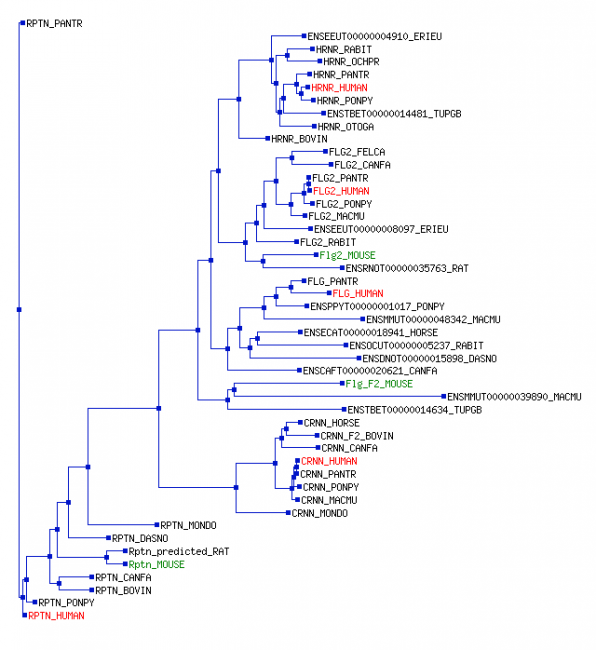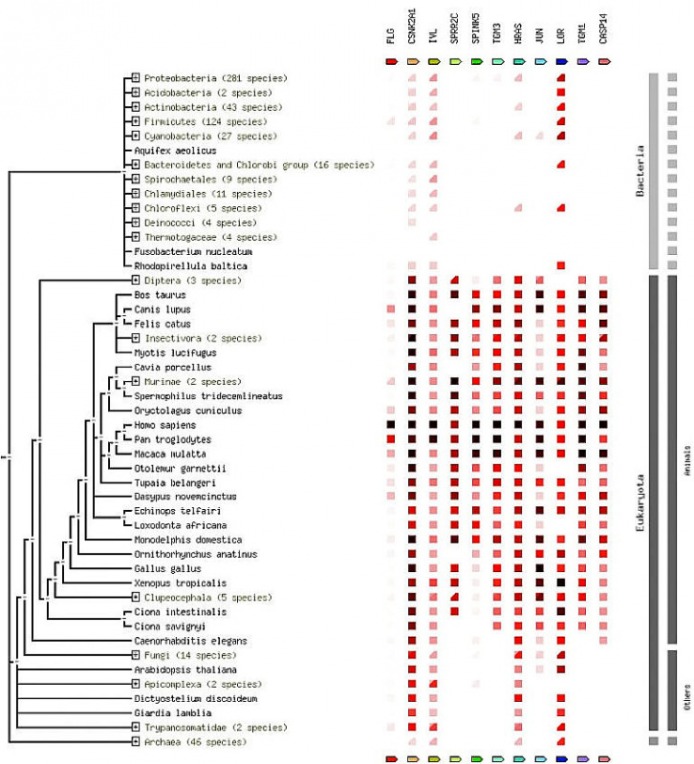Phylogeny
Using GeneBee, I compared the sequences and reconstructed the following phylogenetic tree.
| See Results |
Conservation of the filaggrin gene
Several methods were used in order to arrange a phylogenetic tree relating the evolution of filaggrin amongst species. TreeFam was the method that was able to bring back the most detail in terms of number of species it found relatable. It also was the most convenient to use, as it did not have the restrictions some of the other machines did. The species in which the gene is found all express epidermal cells, making them logical inheriters of the skin-related gene. The most closely related parallel is seen in the chimpanzee, whose skin makeup is notably similar to the homo sapiens. We see that in many of the homologues that we researched, we see a similar trend in the evolution of the gene as well as the protein. It is also notable that complexity of the gene seems to increase size, as it goes from mouse to cow to chimpanzee to human. Since epidermal layers are a common and highly conserved feature of mammals, it is not surprising to see that the gene and protein would show high correlation amongst the species and I am confident that more homologues will appear and more branches will be added to the phylogenetic trees as more data is accumulated on Filaggrin.
References
1. Gene Bee: http://www.genebee.msu.su/genebee.html
2. TreeTop: http://www.genebee.msu.su/services/phtree_reduced.html
3. TreeFam: http://www.treefam.org/
1. Gene Bee: http://www.genebee.msu.su/genebee.html
2. TreeTop: http://www.genebee.msu.su/services/phtree_reduced.html
3. TreeFam: http://www.treefam.org/



